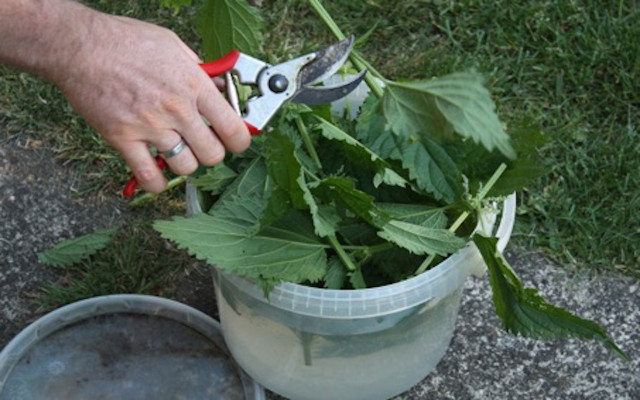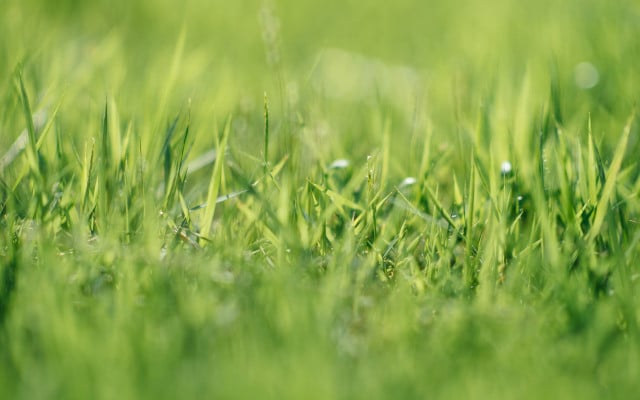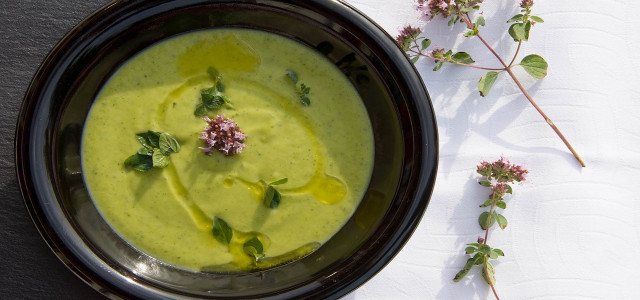Reclaim your lawn the sustainable way with your own homemade weed killer. Utopia will show you how to kill weeds naturally with these six organic DIY ideas.
Before you decide which unwelcome visitors to target first with your homemade weed killer, we recommend a look into the herbology behind many of these pesky garden invaders. Believe it or not, many wild weeds are edible or possess medicinal properties. For example, the common weeds dandelion, stinging nettles, goutweed, and ribwort are all edible. Tossed into a salad, they can make up an important part of a healthy balanced diet, too.
We’ll show you how to kill weeds naturally with some of the most effective organic recipes out there.
1. Homemade Weed Killer: Stinging Nettle Recipe

This recipe requires quite a bit of prep time but will pay off in the end. For those with enough time on their hands, we highly recommend this stinging nettle weed killer. It’s highly effective and an extremely environmentally friendly pick.
The active ingredient in this organic weed killer is said to be the formic acid contained in the nettle. For this homemade weed killer, you’ll need to carve out around half an hour for prep – plus about two weeks fermentation time.
- With protective clothing and gloves, pick a large garbage bag full of stinging nettles.
- Crush the nettles and press them into a large bucket until about three quarters full.
- Fill the bucket with water.
- The mixture must now ferment, preferably in a sunny place. If the smell becomes too unpleasant during fermentation, you can add some rock flour. This will neutralize the unpleasant smell.
- Stir the mixture here and there.
- Once the fermentation process is complete after about two weeks, you can pour the highly concentrated homemade weed killer into a spray bottle for use in the garden.
- With your spray bottle, apply this organic weed killer to the leaves and stems of the weeds you want to get rid of. The leaves burn due to the formic acid they contain. Avoid the more useful weeds and be careful with the dosage.
This recipe is completely natural and, unlike vinegar and salt solutions, doesn’t damage the soil. It does require a bit of work, however. Next, Utopia will show you how to kill weeds naturally and quickly with a range of simple garden hacks.
2. Getting Rid of Weeds with Hot Water



You can also use hot water to kill weeds. Since it does not contain ingredients such as salt and vinegar, you can use this simple homemade weed killer (if you can even call it that) on sealed surfaces such as driveways and pavement. Boiling water requires quite a lot of energy, however. Thus it’s important to carefully consider whether simply weeding by handing is a more efficient option.
3. Organic Homemade Weed Killer: Preventive Mulches
A thick layer of bark mulch will suppress the growth of weeds. Simply take your shrub or tree prunings, chop them up finely, and spread them throughout your flowerbed. You can also use dried lawn cuttings. By choosing this homemade weed killer, you’ll put your garden waste back to use in a meaningful way and save yourself the trouble of weeding.
4. How to Kill Lawn Weeds Naturally



Lawn weeds can pose quite a challenge once they begin to take over your yard. If not kept under control, they may even grow into an entire meadow of weeds. The first step towards taking your lawn back is a homemade lawn fertilizer, such as one made of used coffee grounds, for example. Weeds tend to spread well in areas where nutrients are scarce.
If this doesn’t yield desired results, you may want to consider lawn scarification. Sometimes referred to as a “dethatcher,” a scarifier is a garden tool which makes cuts into the lawn in order to remove dead moss and other yard waste debris, such as weeds. This method of killing weeds naturally also helps to aerate the soil, thus helping to improve the overall health of your lawn.
Read more: Bees Need Water – Help Them out with a DIY Bee Waterer
5. Vinegar Weed Killer: Does Vinegar Kill Weeds?
Here’s what you need to know about using vinegar as a homemade weed killer:
Vinegar does kill weeds. It is an acetic acid and will generally kill any plant it comes into contact with. The higher the acetic acid content of the vinegar, the better job it will do. Vinegar used in the kitchen is usually rather low in acetic acid content (around 5%). Household vinegar will help kill small sprouted seedlings, but hardier weeds will need a great acetic acid concentration.
Please note:
- Vinegar with concentrations of acetic acid above 11% can burn the skin and damage your eyes upon contact. Due to these inherent health risks and the potential for environmental harm, we do not recommend using stronger 20% acid vinegar.
- For larger weeds, it makes more sense to weed by hand or use less harmful homemade and organic weed killers.
- Be careful when applying a vinegar near other plants. It’s nonselective, meaning it will kill any above-ground growth it comes into contact with. This is also why vinegar isn’t particularly well-suited for killing lawn weeds.
- When using vinegar as a weed killer, it’s probably best to stick to patios, walkways or where weeds are isolated from other plants.
- Vinegar works best during hotter temperatures and under direct sunlight.
- Avoid contact with metal gardening tools or equipment.
Utopia’s tip: Edible Flowers: Which Are Safe to Eat and How to Put Them to Use
6. The Best Method: Weed By Hand



It’s not always the easiest job out there, but sometimes it’s simply the best way to get it done. Weeding by hand is an extremely effective way to get rid of unwanted plants and keep them away. Even after applying a homemade weed killer, roots tend to stick around in the soil and it doesn’t take long before the weeds start growing again.
Good tools to use are a garden rake and a trowel. The best time to get some weeding done is shortly after rain when the soil is nice and soft. Remember: not all weeds need to head straight for the compost pile. For example, you can use dandelion weeds to make a sweet dandelion honey (or syrup) and ribwort makes one of the best teas for colds.
This article was translated from German to English by Evan Binford. You can view the original here: Unkrautvernichter selber machen: so geht’s
** Links to retailers marked with ** or underlined orange are partially partner links: If you buy here, you actively support Utopia.org, because we will receive a small part of the sales proceeds. More info.Do you like this post?








